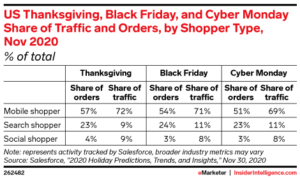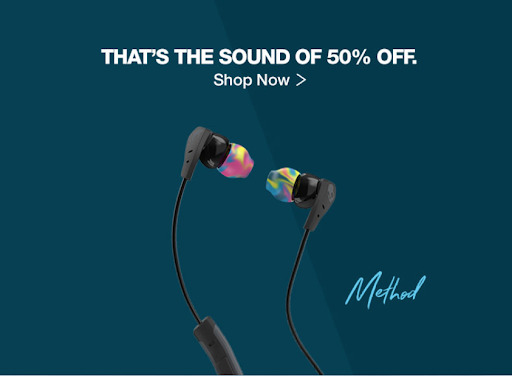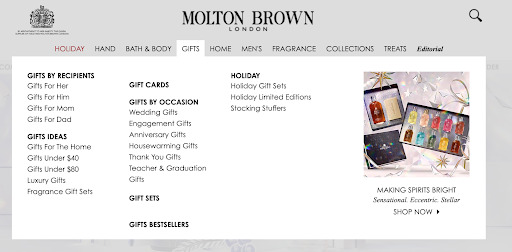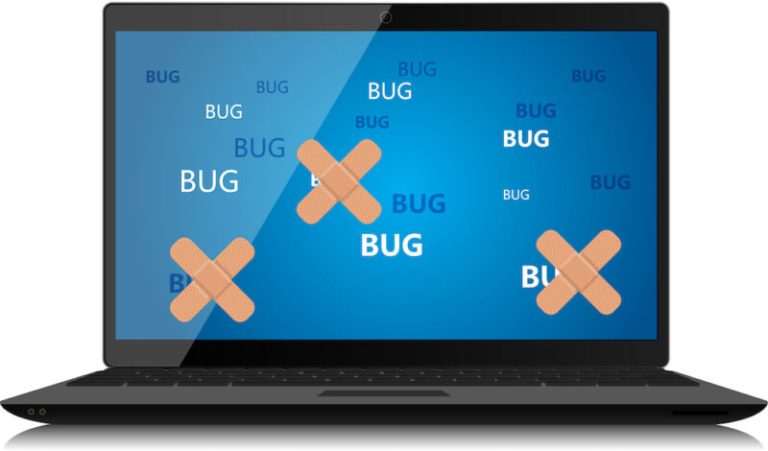Thanksgiving, Christmas, New Year’s Eve are the trifecta of most profitable holidays for retailers.
2020, however, brought a mixed bag of excitement, anxiety, and high hopes for the holiday season. However, this year, eMarketer predicts that ecommerce sales will increase 11.3% to $206.88 billion, and both Cyber Monday and Black Friday will surpass $10 billion in ecommerce sales.
So how can you ensure your ecommerce store comes out ahead? Follow these strategies for increasing your holiday sales.
Optimize Your Ecommerce Website to Increase Conversion Rates
With a significant amount of holiday shopping happening online, your ecommerce website must be up to it’s best. By using these next strategies, you’ll ensure that you are delivering the best holiday shopping experience to every visitor.
1. Optimize for mobile.
According to eMarketer, mobile drove a majority share of ecommerce shopping and buying behavior on the key shopping holidays in 2020.


And the mobile shopping trend should remain strong this year, too. So make sure that you deliver the best experience for on-the-go shoppers:
- Run a Google Mobile-Friendly test and make the suggested optimizations.
- Personalize shipping estimates/product availability based on the customer’s location.
- Use above the fold area to highlight the sweetest deals.
- Enable dynamic page serving to improve website speed.
- Remove pop-ups and sidebars for mobile users as they add friction.
- Pre-fill customer details during check-out to avoid mistakes.
- Offer guest users to email their shopping list to finish shopping on the desktop.
- Add support for digital wallets to speed up the checkout.
Learn more about designing a delightful mobile shopping experience from our previous post.
2. Offer Buy Now Pay Later (BNPL).
A key tool this year for holiday retail sales: buy now pay later (BNPL) financing that allows consumers to pay later for their purchases in installments with no interest or fees, as long as they make their payments on time.
With innovative payment solutions like Sezzle, brands can reach a younger demographic who may have not been able to shop with traditional payment plans like credit cards, and the corresponding concerns about credit card interest, hidden fees and revolving credit. Therefore, as brands are looking to maximize on the holidays, offering BNPL tools is a must.
Learn more about how to grow your business with Sezzle this holiday season.
Additionally, according to the Affirm Consumer Spend Report, Affirm’s look at what consumers are up to and where they’re headed next, 56% of Americans are interested in using a pay-over-time solution for holiday shopping this year; and of those, 69% will use a pay-over-time solution to help keep them on budget (even if they could pay for the item in full).
Not only do today’s shoppers like the option to use several different payment methods, retailers can benefit from offering “as low as 0% APR promotions” with Affirm as a way to capture new business during the holidays.
Learn more how Affirm can increase sales for your business this holiday season.
3. Optimize pop-ups, forms, and website messaging.
Website micro-copy — button names, call-to-actions, forms, and pop-ups — often get overlooked during seasonal content re-optimization. Shamefully so as it’s the small details that add an extra feeling of delight and prompt conversions.
Most ecommerce business owners can’t run multiple A/B tests during the holiday campaigns to optimize every crevice of their website. So choose your priorities:
On-site pop-ups and banners: Give your regular pop-ups a seasonal flair. Change the colors, messaging, and value proposition to better match the seasonal promotion. However, don’t get all too giddy and bury your standard brand voice under the seasonal promo madness. Or you risk putting away some consumers.
Keep your seasonal messaging and offers aligned with your regular brand personality. For example, Skullcandy maintained their sleek brand look during holiday sales but opted for a clever on-brand promo copy for their homepage banner to draw attention to current discounts.


Billing and shipping forms: These two forms are the most error-prone, and oftentimes confusing for the customer. Make the job easier for everyone by:
- Pre-filling the details for repeat customers.
- Auto-checking shipping address for validity.
- Providing a drop-down list of street addresses based on zip code.
- Displaying service messages about shipping times and possible delays.
- Adding tooltips to form fields that may steer confusion.
- Placing extra microcopy to explain what data you need (e.g. shipping address must match credit card address).
On-page CTAs: Call-to-actions are the trickiest to optimize. Try testing new variations several weeks before the campaign launch. To do that:
- Add a heatmap tool to your homepage and several product pages to analyze which website elements trigger visitors’ attention.
- Create several call-to-action variations for those elements. Write more explanatory button texts e.g. “request pricing” instead of “request quote”. Try changing product descriptions too. Add more product features, infuse more personality into your writing, test several new ecommerce copywriting formulas.
- Run a series of A/B tests to benchmark the performance of new elements versus the old ones. Scale what works. Ditch what doesn’t.
Setup New Sales Channels to Expand Your Reach
Shoppers will no doubt be browsing on social media, whether it’s to find the perfect gift or just part of their everyday routine. So use this as an opportunity to get your brand in front of them this holiday.
1. Use product tags to create shoppable Instagram posts.
To increase your success with social commerce on Instagram, use product tags frequently across different formats in feed, stories, Reels, IGTV, captions and Live. This way you’re accounting for each area of the platform where people spend their time. Additionally, using product tags consistently to create more shoppable posts can help you reach new shoppers and get the most out of your shop.
To take advantage of social, merchants can leverage Facebook for BigCommerce. It makes it easy for businesses to list products and offer service appointments across the Facebook family of apps, find people likely to buy, and measure results.
2. Sell on new marketplaces.
Marketplaces can be very popular during the holiday season. So, if you’re not already selling on them, now is a great time to start.
For instance, if you are using BigCommerce, you can easily connect to Amazon, Amazon MCF, Google Shopping, eBay, Walmart Marketplace, Wish and Mercado Libre.
Also, don’t feel like you need to list every product you sell. You can always start small with just your most popular items, and evaluate from there.
4 Quick and Effective Promotional Strategies to Increase Holiday Sales
To kickstart your holiday campaign planning, consider the next four promotional strategies. All of them offer a good mix of investment versus revenue generation for both the small and bigger folks.
1. Run a giveaway.
The holiday season is all about sharing the joy. Giveaways play along nicely with that feeling of generosity. This year, however, you may want to put a different twist on your promo strategies — the socially-conscious one.
Show that your ecommerce brand stands by the right values — transparency, community support, sustainability, and ethical employee treatment — by hosting a creative contest around a good cause. For example:
- Offer to donate a % from each sale to a local charity.
- Match each customer entry with a $1 donated to a good cause.
- Host a choose-what-you-pay contest, allowing customers to select a price tier for promo products.
- Encourage giveaway shares by matching referral entries with an extra donation.
Natori, for example, has a year-round donation program set on their website. Customers can choose to donate 1% from every purchased item to a charity of their choice:


You can set up a similar seasonal campaign using ShoppingGives — a donation service that seamlessly integrates with BigCommerce.
2. Provide loyal customers with unique discounts.
Promos and discounts are among the top factors influencing holiday purchases. Considering that most consumers are still in the ‘save, rather than splurge’ state of mind, most will hunt for good deals.
Play in line with that mood and treat your loyal customers with personalized coupon codes. In fact, 49% already expect brands to always send personalized promotions in line with their preferences, per Deloitte.
Try some of the following ecommerce discount code ideas this holiday season:
- Send discounts for recently browsed, saved, or placed in the cart products.
- Personalize discounts based on loyalty status.
- Use location data to provide hyper-personalized local deals.
- Offer tiered discounts for each repeat purchase.
- Pitch a free personalized gift for different spending caps.
Jeni’s ice cream, for example, treated all holiday shoppers last year with an extra $20 gift card for every $100 spent on gift cards with them.


3. Create a sense of urgency with discount countdowns.
Countdown timers trigger FOMO feelings among consumers. Also, they build up a sense of scarcity, forcing our brain to want the fleeing thing before it’s gone.
German researchers found that a feeling of scarcity makes us auto-rate in-demand products as more attractive. And we rate luxury products more favorably if they are scarce due to limited supply.
Here’s how you can put that bit of knowledge into action:
- Use countdown timers in email marketing to promote short-term discounts for high-value, signature products. Keeping these sales semi-private helps prevent brand dilution. At the same time, you can still get a boost in online sales.
- Feature countdown banners on your website for the most in-demand products (or ones you wish to position as such). Placing a timer next to every product reminds shoppers that the time is running up soon so that they are more likely to proceed with the checkout (instead of hoarding products in the cart). Note: if a timer next to each product makes your website look messy, add a sticky header banner atop of your website.
4. Give first-time buyers a reason to return.
With supply chains still disrupted, a lot of consumers are keen to discover new brands. If your company came on their radar during holidays, direct some extra effort at entertaining and retaining them.
So how can you entice new customers to return? Try this:
- Get them on your loyalty program: Loyalty programs help move customers up the buying ladder, increase repeat business, and foster deeper emotional connections. Prompt subscription during check-out and sweeten the deal for first-time shoppers with a quick discount for second purchase.
- Pitch a subscription offer: Subscription boxes offer a recurring revenue stream — a nice-to-have option in times of uncertainty. Perhaps this is why 75% of DTC brands plan to have a subscription-based offering by 2023. Compound this with the fact that one in five consumers tried a new subscription box during the pandemic and the conclusion is rather clear: starting a subscription is good for ecommerce businesses and for their customers too.
- Excell the product delivery: Salesforce estimates that some 700 million gifts may not arrive on time this year due to congested last-mile delivery. At the same time, 56% of consumers say that they will not have repeat business with a retailer after a bad delivery experience. So test your shipping strategy before the holiday season to ensure that you can be there on time. Timely and positive delivery experience instills greater confidence in your brand and encourages repeat purchases.
Treat Customers to the Best Holiday Commerce Experience
Holiday shopping can be whimsically wonderful or miserably gruesome (especially when done at the last minute). Help your customers get the best out of their shopping spree(s) by testing the next five strategies.
1. Create holiday gift guides.
The holiday season can be mentally taxing for some shoppers, struggling to find the right gift for an array of people on their list. Reduce their feeling of overwhelm by curating a series of holiday guides, featuring your products.
Get creative and think beyond the standard “For Him/For Her” categories. Pinterest found that last year holiday shoppers were increasingly looking for:
- Personalized gift ideas
- Sustainable gift ideas
- Self-care package gifts
- Snail-mail gifts
- Teacher Christmas gift ideas
- Colleague Christmas gift ideas
Use last year’s shopping customer data to determine which gift categories will work best for your customers. Then set up dedicated holiday landing pages for them and optimize them around relevant search queries.
Take a page from Molton Brown that let’s shoppers discover gift suggestions for all sorts of occasions and within their budget:


SEO-optimized holiday guides and product landing pages can drive extra search traffic to your website, plus street the returning customers in the right direction.
2. Provide the best customer service.
Proactive solving of your customers’ issues during the holiday season is key to winning them for the long-term.
However, maintaining high service levels during the hectic holiday season is challenging. Between ensuring product stock, timely shipping, and normal website operations, it’s easy to miss some urgent customer queries.
So plan ahead and scale your customer service before the hottest part of the sales season kicks in. Here’s how:
- Create or update self-help pages, offering a quick resolution to the most frequent customer issues.
- Add a chatbot to act as a first-line of help, guiding users towards the right answers, and providing basic help.
- Hire extra people for your CS team to take over online support — live chat, email queries, social media questions.
If you have extra budgets, consider adopting an AI-driven conversational platform to assist with online support. New-gen platforms can pre-write answers to the common customer questions, auto-serve relevant data to agents, and otherwise augment the speed and accuracy of their replies.
Intercom, Cognity AI, Twyla, and Bold360 offer intelligent automation solutions for customer support.
3. Run a holiday social media campaign.
Social media has become an independent shopping avenue with the rise of the shoppable posts. Consumers are hooked, especially the younger ones.
So how do you bridge the gap between inspiration and purchase on social media without dropping too much cash on ads?
Start building your social media audience lists 1-2 months before the holiday season.
This way when the holiday season kicks in, you won’t be burning cash on generic ads marketing to disinterested consumers or people who are not familiar with your brand. Or rub elbows with a ton of other brands pitching similar deals. Experiment with different types of social media posts and ad formats to determine engaged users and perhaps convert some to your email list. Direct most of your efforts to fill your sales funnel with brand-aware and interested prospects.
When November kicks in, get more hands-on, and convert those shoppers with:
- Offer ads on Facebook.
- Remarketing ads to visitors/past customers.
- Shoppable Instagram posts.
- Time-sensitive promo codes shared in Instagram stories.
4. Work with micro-influencers.
Influencer marketing can help increase brand awareness during the pre-holiday season. Similar to social ads, you are likely to get the best returns if you:
- Invest early in early promos for the top of the funnel customers.
- Carefully select your pool of partnerships.
- Focus on increasing brand awareness/recall, rather than sales alone.
If you are on the cautious, but curious side, here’s a good option for you — run a micro-influencer holiday campaign.
Micro-influencers (people with 1,000 to 10,000 followers on social media) usually have highly-engaged audiences around a certain interest group (e.g. skincare, home design, healthy eating, etc).
Want to give it a try? Hop on social media and look for conversation-starters in your industry or around your consumer interests. Pay attention to the number of comments and video views above the average number of likes per post to find truly active accounts.
You can also sign up for an influencer marketing platform to get matched with pre-vetted influencers, suggested based on your criteria. Some of the popular ones are Post for Rent, Stellar, and Neoreach.
5. Send creative cart abandonment emails.
During the holiday season, retailers can expect cart abandonment to rise as consumers hunt for deals, shop around, or altogether forget about their earlier intention to shop with your brand.
Get back on their shopping radar by sending a quick email reminder to complete their purchase. And since it’s the holiday season, sprinkle it with some extra topping.
- Use humor to prompt shopper to complete their purchase
- Add a small discount for products left in the card
- Promise a coupon code for the second order with you
Read more about creating attention-grabbing ecommerce cart abandonment emails.
Pitch or Ditch? How to Know Which Tactic Can Actually Increase Your Sales
Even though it’s the holidays, you still need to be extra careful with your promo spending. After all, many marketing tricks don’t bring the advertised clicks. To line up the strongest marketing strategies for this year’s campaign, evaluate each one by asking the next questions.
1. Does it make sense for your target audience?
Throwing in extra cash in TikTok marketing (that’s oh-so-hot right now) won’t make sense if your primary buyers are older Millennials and Gen X types. Use your historical data to drive your decision for this year’s campaign. Specifically, try to gauge:
- How price-sensitive and discount-driven is your primary audience?
- How well do they respond to various campaign types?
- What type of brand experience do they prioritize — faster shipping, free shipping, personalized offers, etc?
A quick email survey can help you collect these nuggets before you go into active marketing mode.
2. Have you tried it in the past?
Analyze the results of last year’s campaign. Which channels brought it the highest ROI? Did you experience any particular types of complaints e.g. ineffective shipping? Identify several strategies that got you great results and pepper them up with 1-2 new tricks.
3. Do you have the tools to implement it?
Determine if new tech investments will pay-off. For instance, if your total influencer marketing budget is $1,500, paying a $250 fee to access an influencer marketplace may not be the best choice. However, if you are running a larger campaign with 10-15 participants, a comprehensive platform can save you a lot of time on managing campaigns, plus help ensure that you are partnering with the right peeps for your brand.
4. Does the tactic cost you money?
While there’s no such thing as absolutely free publicity, some marketing tactics cost you less to execute since you already have the tools, tech, and people to run them. Still, they won’t be completely free if you are reallocating your time from other tasks.
Assess each tactic from the perspective of upfront investment vs possible ROI vs ease of execution. Aim for:
- High ROI and very easy to do.
- Low upfront investment plus high ROI.
Wrapping Up
You now have a working set of ecommerce marketing strategies to increase your holiday sales. So it’s time to get to work!
Start with the lowest hanging fruits — marketing strategies you’ve already tested and that are still relevant in the current shopping landscape. Add them to your marketing plan for 2021.
Then move on to pre-holiday planning. Determine the discount strategy for different holidays, channels, and customer groups. Review your website and identify which areas need improvements — product descriptions, banners, CTAs, or any other assets. Also, start working on your seasonal content.
Next, decide on your social media strategy for the holidays. Set your budgets, distribute them among different campaign types (ads, influencer marketing, organic content creation). Start running pre-holiday promos to get some new leads to the top of your funnel.
Also, ensure that your CS team is properly staffed and in hot-response mode. Reach out to your shipping partner to ask about the potential delays and organize back-up/alternative logistics.
Lastly, don’t postpone your planning any further. Take one of the strategies from this guide and start acting on it now!






